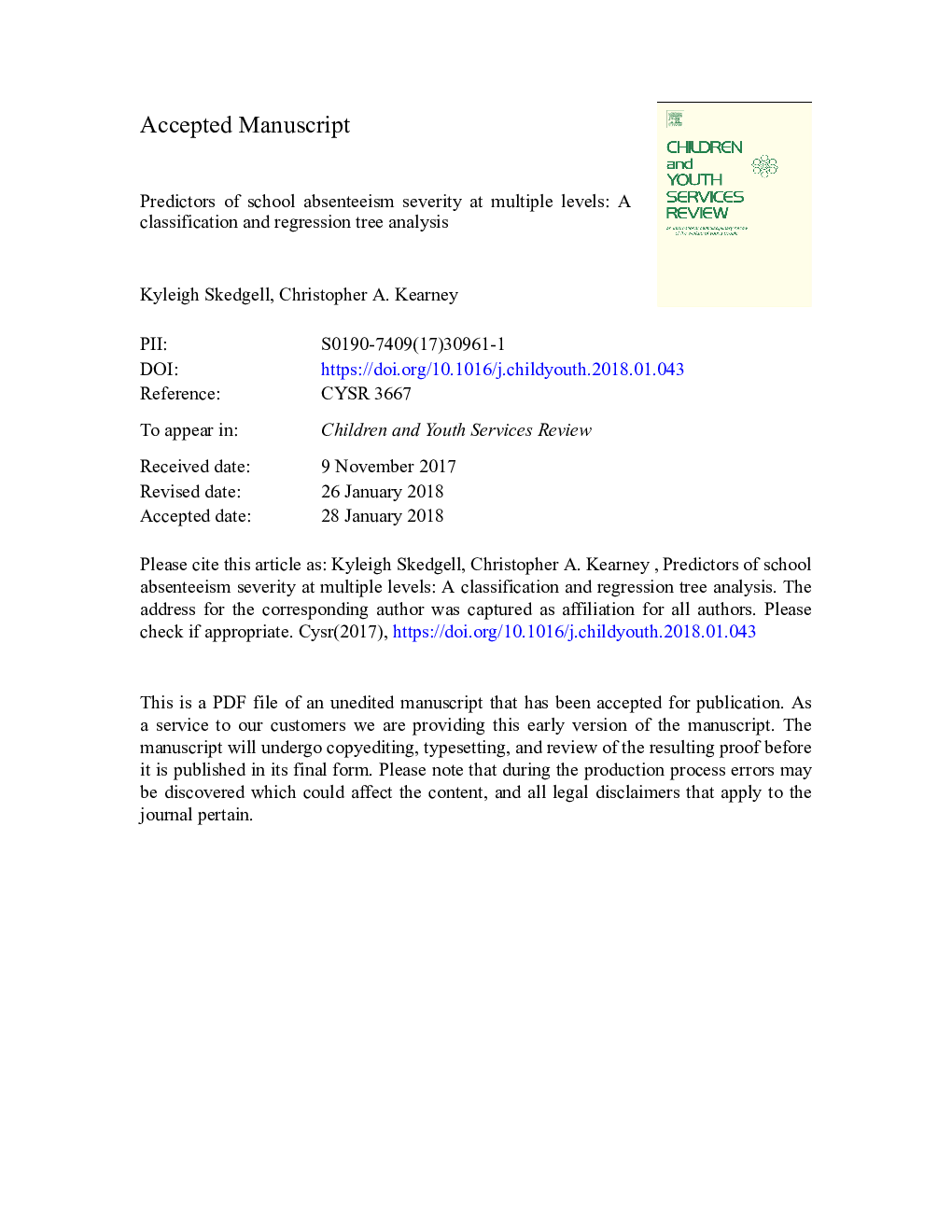| Article ID | Journal | Published Year | Pages | File Type |
|---|---|---|---|---|
| 6833398 | Children and Youth Services Review | 2018 | 38 Pages |
Abstract
School attendance is an important foundational competency for children and adolescents, but rates of problematic school absenteeism have remained high and steady. Efforts to conceptualize problematic school absenteeism across its myriad psychiatric symptoms, risk factors, and intervention types have centered recently on multi-tiered systems of support models that arrange these variables into prevention, early intervention, and intensive intervention tiers. Unfortunately, research into absenteeism severity levels to demarcate these tiers remains sparse. The present study utilized nonparametric classification and regression tree analysis to examine multiple demographic and academic risk factors simultaneously in a very large and diverse community sample. Academic variables included grade level, letter grades, grade point average, individualized education plan eligibility, and participation in school sports. Demographic variables included youth age, gender, and ethnicity. The study aimed to identify risk categories for school absenteeism severity at the 1%+, 10%+, and 15%+ levels and across elementary, middle, and high school levels. Results indicated a more homogeneous set of risk factors at the 10%+ and 15%+ levels than the 1%+ level, in particular with respect to low GPA, age 15.5â¯+â¯years, African American or American Indian ethnicity, and grades 1, 6, 7, 8, 10, 11, or 12. The results have implications for identifying highest risk youth to further improve assessment, prevention, and intervention practices for this population.
Related Topics
Health Sciences
Medicine and Dentistry
Perinatology, Pediatrics and Child Health
Authors
Kyleigh Skedgell, Christopher A. Kearney,
